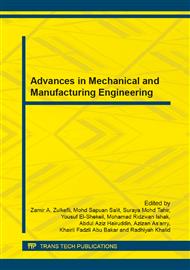p.48
p.54
p.60
p.66
p.72
p.77
p.83
p.89
p.94
Risk Evaluation Approach in Failure Mode and Effect Analysis of Automotive Headlamp Assembly
Abstract:
Headlamp assembly entailed a complex assembly process and error in assembled can result in technical problem and higher reject rate at the end of the assembly process. A study has been conducted, in one of the automotive headlamp assembly in Malaysia, where there are numerous defect detected during the assembly process, such as metal spacing missing, wrong model housing, wrong sticker affix, wrong orientation with a total of 80% defects detected. Currently the headlamps are assembled with no dimensional control, results in high physical nonconformity product. The main objective of this project is to identify potential failure in headlamp assembly process. The approach used was risk assessment tool which is Process Failure Mode and Effect. This work also developed the corrective action plan for accurate ranking of Failure Modes by Risk Priority Number-based method and implement it to the process assembly. The result showed that there was increased of 5% in preventive action and 4% increment of the detection action
Info:
Periodical:
Pages:
72-76
Citation:
Online since:
June 2014
Authors:
Price:
Сopyright:
© 2014 Trans Tech Publications Ltd. All Rights Reserved
Share:
Citation:


